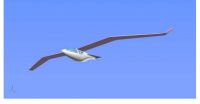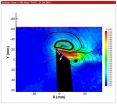(Press-News.org) STANFORD, Calif. — Researchers at the Stanford University School of Medicine have successfully transformed normal human tissue into three-dimensional cancers in a tissue culture dish for the first time. Watching how the cells behave as they divide and invade surrounding tissue will help physicians better understand how human cancers act in the body. The new technique also provides a way to quickly and cheaply test anti-cancer drugs without requiring laboratory animals.
"Studies of this type, which used to take months in animal models, can now occur on a time scale of days," said Paul Khavari, MD, PhD, the Carl J. Herzog Professor and chair of dermatology at Stanford. The researchers focused on epithelial cells, which line the surfaces and cavities of the body. Cancers of epithelial cells make up approximately 90 percent of all human cancers.
The study of three-dimensional tumors also avoids the use of cancer cell lines, which are typically grown in single layers and may have accumulated genetic changes that don't accurately reflect what happens in humans.
Khavari, who is also a member of the Stanford Cancer Center and serves as dermatology service chief at the Veterans Affairs Palo Alto Health Care System, is the senior author of the research, which will be published online Nov. 21 in Nature Medicine. Todd Ridky, MD, PhD, a former postdoctoral scholar in Khavari's laboratory, is the first author. Ridky is now an assistant professor at the University of Pennsylvania.
The researchers worked with normal human epithelial cells gathered from surgical samples from skin, cervix, esophagus and throat. Unlike cancer cell lines, some of which have been grown in laboratories around the world for years, these primary cells were minimally cultured.
To make these normal cells cancerous, the researchers used viruses to tweak just two genetic pathways known to be involved in uncontrolled growth. One drives cells forward in the cell cycle while the other disables an internal checkpoint that normally blocks abnormal proliferation. Many naturally occurring human cancers display identical genetic changes, and the researchers found that simultaneously altering the two pathways is highly effective at transforming normal cells.
Khavari and Ridky then added the altered, pre-cancerous epithelial cells to a tissue culture dish containing other components of human skin. Epithelial cells normally sit on a thin partition called the basement membrane that separates them from a lower layer of skin called the stroma. They found that at first the cells nestled down on the basement membrane and formed what looked like a normal, three-dimensional cross-section of skin. But within about six days, the cells started to behave more ominously — punching through the membrane and invading the stromal tissue below.
"This reflects what we see happening in spontaneous human tumors," said Khavari. "Cells go from a pre-malignant state to invasive cancers, often over the course of years. Only in this intact, human-tissue model it occurs much more quickly." In contrast, unaltered cells remained obediently on their side of the basement membrane.
When the researchers examined the patterns of gene expression in the newly cancerous cells, they found that the patterns closely matched the genetic profiles of spontaneously occurring human cancers. But when the cells were grown in a single layer, without the basement membrane, stroma and normal three-dimensional tissue structure, their gene expression profiles were markedly different.
"This tells us that conclusions drawn from studying cells grown in two-dimensional culture need to be correlated with other findings to help ensure clinical relevance," said Khavari.
The researchers took advantage of their new "tumor-in-a-dish" model to test 20 new experimental anti-cancer drugs. Many of these drugs cannot be easily tested in animals because they are difficult to administer and may be toxic in their current form. But Khavari and Ridky were able to quickly home in on three promising candidates that stopped the altered epithelial cells from invading through the membrane. While the drugs will still have to be optimized for testing in animals, this type of pre-screening allows researchers to narrow down the possibilities.
The three-dimensional culture system also indicated that the stromal cells themselves somehow encourage the invasion of the altered epithelial cells, and that the cells don't need to be dividing wildly in order to be able to invade.
"These things had never been directly tested before in human tissue," said Khavari, who pointed out that the new model still doesn't incorporate many other biological players, such as the immune system and an active metabolism. And yet "now that we can create human tumors from multiple different human tissues, we have a new way to assess what might be going on in spontaneous human tumors."
###In addition to Ridky and Khavari, other Stanford researchers involved in the work include research assistant Jennifer Chow and postdoctoral scholar David Wong, MD, PhD. The research was funded by the U.S. Veterans Affairs Department of Research and Development, and the National Institutes of Health.
Information about the Department of Dermatology, which also supported the research, is available at http://derm.stanford.edu.
The Stanford University School of Medicine consistently ranks among the nation's top medical schools, integrating research, medical education, patient care and community service. For more news about the school, please visit http://mednews.stanford.edu. The medical school is part of Stanford Medicine, which includes Stanford Hospital & Clinics and Lucile Packard Children's Hospital. For information about all three, please visit http://stanfordmedicine.org/about/news.html.
END
WASHINGTON, D.C., November 21, 2010 -- Airplanes do not look much like birds -- unless you were to imagine a really weird bird or a very strange plane -- but should they? This question is exactly what a pair of engineers in California and South Africa inadvertently answered recently when they set about re-thinking the ubiquitous tube-and-wings aircraft architecture from scratch in order to make airplanes more fuel efficient.
The modern airplane design works well, but from a fuel efficiency standpoint, could planes be designed more aerodynamically -- to lower drag and ...
WASHINGTON, D.C., November 21, 2010 -- For centuries, hunters have imitated their avian prey by whistling through their fingers or by carving wooden bird calls. Now a team of physicists at Harvard University in Cambridge, Massachusetts, has reproduced many of the characteristics of real bird song with a simple physical model made of a rubber tube.
"We wanted to know if you [could] build a simple device, which has minimal control but reproduces some non-trivial aspects of bird song," says L Mahadevan, a professor at Harvard. The work is being presented today at the American ...
WASHINGTON, D.C., November 21, 2010 -- Hummingbirds rank among the world's largest and most accomplished hovering animals, but how do they manage it in gusty winds?
A team of researchers at New Mexico State University, Los Alamos National Laboratory, Technische Universiteit Eindhoven, and Continuum Dynamics Inc. has built a robotic hummingbird wing to discover the answer, which they describe today at the American Physical Society Division of Fluid Dynamics (DFD) meeting in Long Beach, CA
Hummingbirds do not fly like other birds, whose wings flap up and down, explained ...
WASHINGTON, D.C., November 21, 2010 -- Jump ropes are used by kids for fun and by athletes for training. But what about the underlying physics? How do jump ropes work? Can important engineering principles be studied?
Jeff Aristoff and Howard Stone of Princeton University have built themselves a robotic jump rope device that controls all the rope parameters -- rope rotation rate, rope density, diameter, length, and the distance between "hands." They capture the motion of the ropes by high-speed cameras, one to the side and one at the end. Then they compare the observed ...
WASHINGTON, D.C., November 21, 2010 -- Magnetic resonance imaging (MRI), a medical imaging technology used to image organs and soft tissues, may hold the key to improving the efficiency of jet engines, according to Lt. Colonel Michael Benson, a Ph.D. student in Mechanical Engineering at Stanford University.
In only a few hours, an MRI collects as much three-dimensional data on flow and mixing as conventional methods that take two or more years of intensive measurement. This promises to slash the time needed to develop and test new designs that improve efficiency and ...
WASHINGTON, D.C., November 22, 2010 -- From a baby's first blurted "bowl!'" for the word "ball" to the whispered goodbye of a beloved elder, the capacity for complex vocalizations is one of humankind's most remarkable attributes -- and perhaps one we take for granted most of our lives.
Not so for people who are afflicted with paralysis to their vocal folds and who suffer the social stigma of affected speech. Nor so for engineering professor Michael Plesniak and post-doctoral researcher Byron Erath at the George Washington University (GWU) Biofluid Dynamics Laboratory ...
WASHINGTON, D.C., November 21, 2010 -- A milestone in the history of renewable energy occurred in the year 2008 when more new wind-turbine power generation capacity was added in the U.S. than new coal-fired power generation. The costs of producing power with wind turbines continues to drop, but many engineers feel that the overall design of turbines is still far from optimal.
New ideas for enhancing the efficiency of wind turbines are being presented this week at the American Physical Society Division of Fluid Dynamics meeting in Long Beach, CA.
One issue confronting ...
SAN ANTONIO, Texas (Nov. 21, 2010) — What prompts normal cells to transform themselves into cancerous cells? Researchers from Texas institutions, including the UT Health Science Center San Antonio, have identified factors in the very first step of the process and reconstituted this first step in the test tube. The latter accomplishment was reported Sunday [Nov. 21] in the top-tier journal Nature Structural & Molecular Biology.
The DNA molecule — the elegant, twin-stranded necklace of life in all cells — gets broken and repaired all the time. Breaks are caused by the body's ...
Global carbon dioxide (CO2) emissions – the main contributor to global warming – show no sign of abating and may reach record levels in 2010, according to a study led by the University of Exeter (UK).
The study, which also involved the University of East Anglia (UK) and other global institutions, is part of the annual carbon budget update by the Global Carbon Project.
In a paper published today in Nature Geoscience, the authors found that despite the major financial crisis that hit the world last year, global CO2 emissions from the burning of fossil fuel in 2009 were ...
(Boston) - Scientists have discovered 30 new genes that control the age of sexual maturation in women. Notably, many of these genes also act on body weight regulation or biological pathways related to fat metabolism. The study, which appears in Nature Genetics, was a collaborative effort by the international ReproGen consortium, which included 175 scientists from 104 worldwide institutions, including Boston University School of Medicine (BUSM) and Boston University School of Public Health.
Menarche, the onset of first menstruation in girls, indicates the attainment of ...

